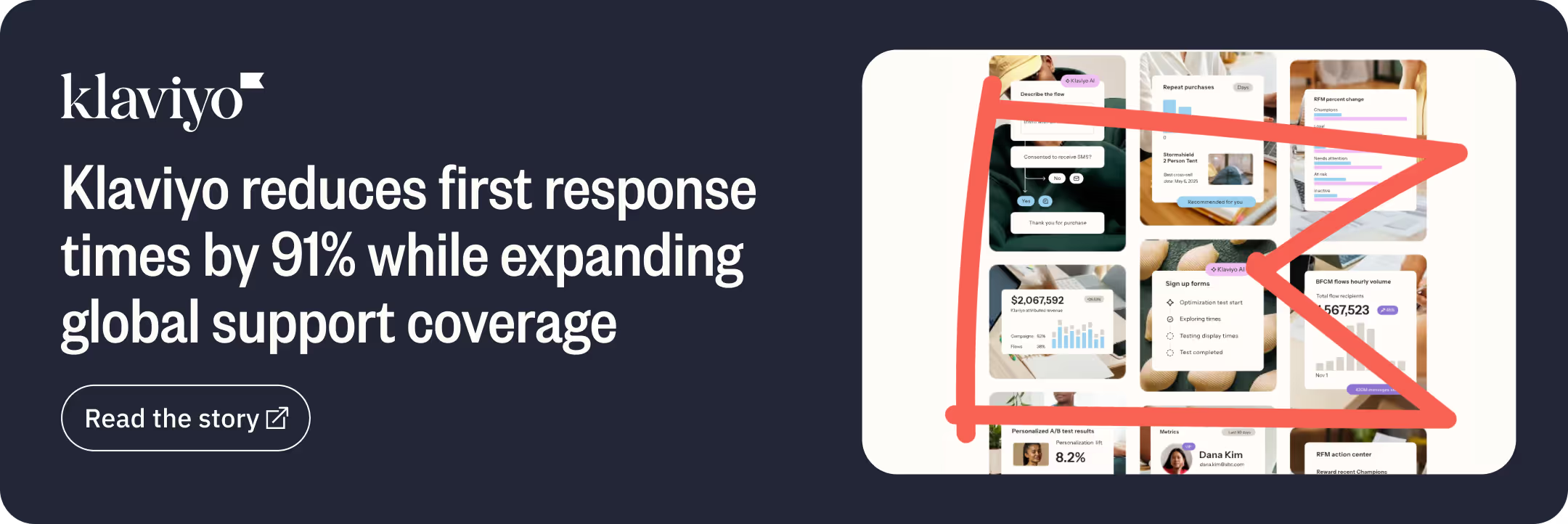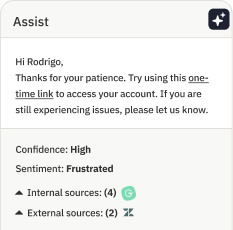What is Scheduling In WFM? - Assembled

Does your organization struggle with juggling staff schedules, dealing with last-minute call-outs, and trying to keep both your employees and customers happy? Scheduling challenges can quickly spiral into bigger problems: unexpected overtime costs, frustrated team members, and customers left waiting when you're shorthanded.
The right workforce management and shift scheduling software can transform these daily challenges into opportunities — unlocking precise labor forecasting, improving employee satisfaction, reducing administrative burdens, and ensuring regulatory compliance.
Below, we'll walk you through everything you need to know about workforce management scheduling: what it is, who benefits most from it, how it solves common business problems, and practical scheduling strategies you can implement right away.

What is workforce management (WFM) scheduling?
Workforce management scheduling is the strategic process that aligns employee shifts and tasks with business demand patterns. It involves:
- Forecasting labor requirements based on historical data and predictive analytics
- Creating optimized staff schedules that balance operational needs with employee preferences
- Managing real-time attendance, time-off requests, and shift swaps
- Ensuring compliance with labor regulations and company policies
The result: reduced labor costs, enhanced employee satisfaction through balanced workloads, and consistent service quality.
Who is workforce management scheduling for?
Regardless of your industry, effective workforce management scheduling delivers measurable ROI through reduced labor costs, improved employee retention, enhanced customer satisfaction, and streamlined compliance. However, WFM scheduling software is particularly valuable for businesses in industries with complex staffing requirements and dynamic scheduling needs.
Support centers
Support centers face continuous challenges with fluctuating call volume. Workforce management scheduling ensures precise alignment between call volume and agent availability, reducing customer wait times and enhancing overall service effectiveness.

Software as a Service (SaaS)
SaaS companies often experience rapid scaling, global customer bases, and omnichannel support demands, which complicate traditional scheduling approaches. Workforce management scheduling software helps SaaS teams forecast and adjust staffing dynamically, ensuring consistent service across chat, email, social, and phone support, while managing distributed teams effectively.

Healthcare
Healthcare companies face unique challenges like unpredictable shift lengths, regulatory compliance, and potential burnout. WFM scheduling software addresses these complexities by efficiently managing shifts, adhering to labor regulations, and safeguarding patient care quality.

Retail and eCommerce
Whether in-person or online, retailers often struggle with staffing accuracy due to variable customer traffic patterns. Workforce management scheduling software helps these businesses forecast customer demand, ensuring appropriate staffing levels during busy periods and reducing unnecessary labor expenses during quieter times.
Hospitality
Hotels and restaurants regularly experience fluctuating guest volumes, making staffing difficult to manage manually. Workforce management scheduling dynamically adjusts staffing according to real-time demand, enabling consistent service quality without unnecessary labor costs.
Manufacturing and logistics
In industries where production and logistics timing are critical, workforce management scheduling ensures productivity by accurately forecasting labor requirements, minimizing downtime and maximizing efficiency.
Bonus use case: Scaling WFM scheduling for enterprise needs
For larger businesses or those operating with highly complex scheduling demands across multiple teams and locations, traditional scheduling methods often reach their limits. As your workforce grows, so does the complexity of managing varied shift rotations, ensuring compliance, and maintaining consistent service quality.
Enterprise-grade workforce management solutions like Assembled’s Enterprise WFM are built specifically for these scenarios. Advanced features such as schedule templates, event optimizations, and automated shift placements enable organizations to handle intricate staffing requirements effortlessly — even as they scale rapidly or deal with fluctuating demand patterns.
This level of automation and optimization not only streamlines administrative tasks but also ensures that your workforce remains compliant, efficient, and capable of delivering consistent service at scale.

Signs your organization needs better WFM scheduling software
Consider implementing a new workforce management scheduling solution if your organization experiences any of these common warning signs:
Excessive overtime costs
When overtime expenses consistently exceed 10% of your total labor costs, it signals inefficient scheduling. Not only does this drain your budget, but it often indicates employee burnout is on the horizon. WFM software can identify scheduling patterns that contribute to overtime and suggest alternatives that maintain coverage while reducing extra hours.
Above-average employee turnover
If your turnover rates exceed industry benchmarks, scheduling practices may be contributing to employee dissatisfaction. Exit interviews often reveal that unpredictable schedules or work-life balance issues drive departures. WFM tools provide more consistent and fair scheduling, addressing a key retention factor.
Contact centers are particularly prone to high employee turnover, with numbers averaging 30–45% annually versus ~15% across all industries. If you’re operating a contact center, workforce management scheduling is something you can’t afford to ignore.
Increasing customer complaints
When customers regularly mention long wait times or inconsistent service quality, it typically indicates a mismatch between staffing levels and demand patterns. WFM scheduling matches your staffing to actual customer traffic patterns, ensuring you have appropriate coverage during peak times without overstaffing during lulls.
Time-consuming manual scheduling
If your managers spend more than 5 hours weekly creating, adjusting, and communicating schedules, they're losing valuable time that could be spent on coaching, development, and strategic initiatives. WFM solutions can reduce scheduling time by up to 80%, freeing managers to focus on business growth.
Compliance concerns
Organizations facing difficulties tracking meal breaks, managing minor work restrictions, or ensuring adequate rest periods between shifts risk significant penalties. Modern WFM systems automatically flag potential compliance issues before they become violations, protecting your business from costly fines and litigation.
Skills-to-shift misalignment
When you struggle to match employees with specialized skills (like language fluency, technical certifications, or product expertise) to the shifts that need those abilities, customer experience suffers. WFM scheduling software tracks employee skills and certifications, automatically matching qualified staff to appropriate shifts.
Persistent under/overstaffing issues
If you regularly have either idle employees during slow periods or insufficient coverage during busy times, you're either wasting labor budget or sacrificing service quality. WFM solutions use historical data and predictive analytics to recommend optimal staffing levels that align precisely with your business needs.

How can workforce management scheduling software help?
Organizations face significant operational and financial challenges when workforce scheduling is mismanaged. Workforce management scheduling software directly addresses these issues by providing tangible benefits including:
Improved employee productivity and satisfaction
WFM scheduling software optimizes shifts according to employees’ skills and preferences, reducing burnout and enhancing job satisfaction. Happy employees are productive employees, leading to higher quality service and reduced turnover. An impressive case study: when retail giant Gap implemented a scheduling optimization solution, sales increased by 7%.
Optimized labor costs and budgeting
Accurate forecasting and real-time scheduling adjustments help organizations eliminate costly overstaffing or understaffing. Businesses can better manage budgets, control overtime expenses, and allocate resources efficiently.
Better compliance and reduced risk
Advanced WFM solutions automatically track compliance with labor laws and regulations. This significantly reduces the risk of costly fines and legal complications from labor violations.
Enhanced customer experience through consistent staffing
Reliable scheduling ensures optimal staffing levels, leading to better service quality and consistency. Customers experience fewer delays and receive prompt service, fostering loyalty and repeat business.
Streamlined operations and reduced administrative burden
Automated scheduling tools drastically reduce administrative time spent on manual scheduling processes. This allows managers to focus on strategic activities, increasing overall operational efficiency.
Core capabilities of workforce management scheduling software
Effective workforce management scheduling software typically includes functionalities designed to simplify scheduling, optimize labor allocation, and improve compliance:
Advanced analytics and forecasting capabilities
Businesses rely on historical data and predictive analytics to anticipate future staffing requirements accurately. These forecasting tools help prevent staffing shortages or unnecessary labor expenditures.
AI-driven recommendations and automation
Routine tasks and scheduling decisions can be automated through AI-driven solutions. Tools like Assembled use predefined business rules to optimize breaks and lunches, maintain compliance, and proactively suggest staffing improvements to enhance employee well-being.
Integrations with existing HR and payroll systems
Integration capabilities ensure that scheduling software communicates seamlessly with existing HR and payroll systems. This connection eliminates manual data entry, reduces errors, and streamlines payroll processes.

Real-time alerts and notifications
Immediate communication of schedule changes or staffing issues is critical for smooth operations. Solutions such as Assembled deliver instant notifications and updates, helping managers rapidly address potential compliance risks or staffing shortages and maintain consistent service levels.
Employee self-service portal
Giving employees more control over their schedules can significantly enhance job satisfaction and reduce administrative workloads. Self-service portals, like those offered by Assembled, enable staff to manage time-off requests, swap shifts, and integrate schedules with tools like Google Calendar and Slack for greater engagement and transparency.
Workforce management scheduling best practices
Adopting workforce management scheduling software is a strategic decision that requires thoughtful planning and careful execution. Follow these best practices to maximize the effectiveness of your implementation:
Assess your current workforce scheduling challenges
Begin by identifying specific scheduling challenges your organization faces, which helps target your implementation efforts effectively.
- Conduct interviews or surveys to gather direct feedback from employees and managers.
- Review historical scheduling data to identify frequent issues like excessive overtime, understaffing periods, or recurring compliance concerns.
- Analyze customer feedback and satisfaction surveys to pinpoint any issues directly tied to scheduling problems.
Define clear objectives and KPIs
Clearly defined objectives and measurable KPIs guide your implementation and allow you to track success.
- Clearly define objectives, such as reducing labor costs by a specific percentage or improving employee satisfaction scores.
- Establish measurable KPIs, such as overtime hours, employee turnover rates, and customer wait times, to track progress.
- Align your KPIs with broader organizational goals to ensure that scheduling supports overall business objectives.
Engage employees early in the process
Employee involvement is essential to ensure successful adoption and to build support for new processes.
- Involve staff in software demonstrations and allow them to provide input on scheduling preferences.
- Clearly communicate how the new system will benefit their day-to-day work.
- Establish regular forums or communication channels for employees to ask questions, express concerns, and provide ongoing feedback.
Provide ongoing training and support
Continuous education ensures your team remains confident and comfortable using the new scheduling system.
- Involve staff in software demonstrations and allow them to provide input on scheduling preferences.
- Clearly communicate how the system will benefit their day-to-day work.
- Establish regular forums or communication channels for employees to ask questions, express concerns, and provide ongoing feedback.
Regularly review and optimize your scheduling practices
Periodic reviews help identify areas for improvement and enable ongoing optimization of scheduling practices.
- Set recurring review meetings to discuss scheduling performance and employee feedback.
- Continuously analyze scheduling outcomes against objectives, using collected data to make informed adjustments.
- Adapt your scheduling approach proactively based on evolving business needs, employee feedback, and market conditions.
Level up your workforce management scheduling with Assembled
Efficient workforce management scheduling is more than a logistical necessity — it's the cornerstone of operational excellence and employee well-being. Leveraging a robust scheduling solution enables organizations to meet service-level agreements, boost employee morale, reduce operational costs, and maintain compliance seamlessly.
Don't let inefficient scheduling hold your organization back. Explore how innovative solutions like Assembled can revolutionize your workforce management, delivering tangible results and empowering your team. Discover the future of workforce scheduling — explore a demo of Assembled today.




